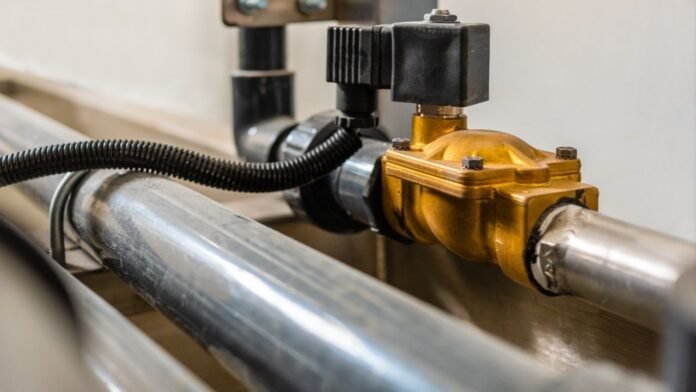The industrial revolution has brought power and benefits which nobody can deny. It has modernised the whole society and has also improved people’s lives and enhanced their efficiencies at work. As you know, industrial development goes hand-in-hand with technology; it keeps on providing you with advanced tools and equipment that help you manage various complex conditions in different industries.
One such advancement is the introduction of valves widely used in different industrial applications to regulate or control liquids’ or gases’ temperature, pressure, and flow capacity. The Solenoid Valve is one such innovation. These electro-mechanical valves consist of an electromagnetic actuator (called solenoid) and a valve. If you are new to the term ‘solenoid’, continue reading! This article will help you understand everything about Solenoid valves.
What is a Solenoid Valve?
First, you need to understand what is a solenoid. A solenoid is nothing but a length of wire which is coiled around a core. The core consists of a movable part (armature) and a stationary part. When current is passed through the wire, it creates a magnetic field that takes the armature away from the stationery core or towards it depending on the solenoid’s construction and usage.
Solenoid valves use solenoid’s working principle to control the flow of liquid or gas passing through it. The actuator is the solenoid plunger in these valves responsible for opening and closing the valve. This actuator is arranged so that the plunger action can either close or open. Solenoid converts the electrical energy passing through it into mechanical energy resulting in push/pull actions.
Types of Solenoid Valves
Primarily, these valves are of three types-
Pilot-Operated Valve (or Indirect Operated)
Pilot-operated valves are the ones that make use of the pressure of the fluid in the line to open the valve. This means these valves utilise less electric power. However, it would be best to have the required pressure to operate the valve.
Direct-Acting Valve (or Direct Operated)
As the name suggests, solenoids present in these valves operate on magnetism and open the valve through electromagnetic force. The coil pulls and pushes the shaft accordingly and makes the valve shift. It operates entirely on electrical power, and in the absence of current, the coil comes back to its original position.
Semi-Direct Operated
These valves combine the properties of both direct acting and pilot operated valves and thus the name. These valves can handle high flow rate applications and can function in zero bar pressure.
Structure of a Solenoid Valve
These valves are constructed in two basic formats- poppet or spool. However, today, more specialised versions are also available in the market to control specific workloads and functions. Here are a few essential components of these valves:
- Coil enclosure: It is a non-ferrous metal of cylindrical shape which comes sealed at one end and provides a channel within which the plunger moves in response to electromagnetic forces.
- Electrical solenoid coil: It is an electromagnet made from copper windings that energise the plunger and make it move in push or pull motion
- Valve body: The main part of the valve includes the valve seats, input-output ports, and an orifice that controls the flow of liquid or gas passing through it.
Applications of Solenoid Valves
The most common Solenoid Valve applications are:
- Industrial cleaning equipment
- Automatic locking systems for door locks
- Air-condition systems to control air pressure
- Dishwashers and washing machines
- Irrigation systems
- Medical and dental equipment
- Car washes
